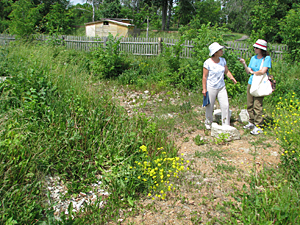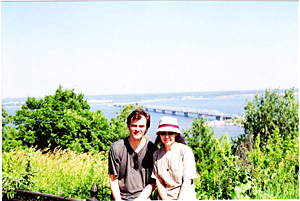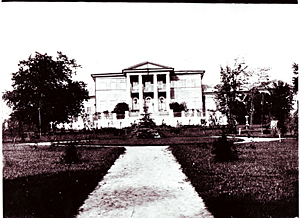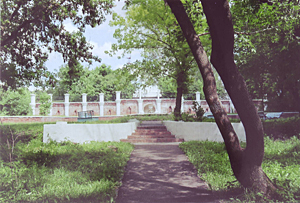- Rozovsky wins prestigious NSF Early Career Award
- UD students meet alumni, experience 'closing bell' at NYSE
- Newark Police seek assistance in identifying suspects in robbery
- Rivlin says bipartisan budget action, stronger budget rules key to reversing debt
- Stink bugs shouldn't pose problem until late summer
- Gao to honor Placido Domingo in Washington performance
- Adopt-A-Highway project keeps Lewes road clean
- WVUD's Radiothon fundraiser runs April 1-10
- W.D. Snodgrass Symposium to honor Pulitzer winner
- New guide helps cancer patients manage symptoms
- UD in the News, March 25, 2011
- For the Record, March 25, 2011
- Public opinion expert discusses world views of U.S. in Global Agenda series
- Congressional delegation, dean laud Center for Community Research and Service program
- Center for Political Communication sets symposium on politics, entertainment
- Students work to raise funds, awareness of domestic violence
- Equestrian team wins regional championship in Western riding
- Markell, Harker stress importance of agriculture to Delaware's economy
- Carol A. Ammon MBA Case Competition winners announced
- Prof presents blood-clotting studies at Gordon Research Conference
- Sexual Assault Awareness Month events, programs announced
- Stay connected with Sea Grant, CEOE e-newsletter
- A message to UD regarding the tragedy in Japan
- More News >>
- March 31-May 14: REP stages Neil Simon's 'The Good Doctor'
- April 2: Newark plans annual 'wine and dine'
- April 5: Expert perspective on U.S. health care
- April 5: Comedian Ace Guillen to visit Scrounge
- April 6, May 4: School of Nursing sponsors research lecture series
- April 6-May 4: Confucius Institute presents Chinese Film Series on Wednesdays
- April 6: IPCC's Pachauri to discuss sustainable development in DENIN Dialogue Series
- April 7: 'WVUDstock' radiothon concert announced
- April 8: English Language Institute presents 'Arts in Translation'
- April 9: Green and Healthy Living Expo planned at The Bob
- April 9: Center for Political Communication to host Onion editor
- April 10: Alumni Easter Egg-stravaganza planned
- April 11: CDS session to focus on visual assistive technologies
- April 12: T.J. Stiles to speak at UDLA annual dinner
- April 15, 16: Annual UD push lawnmower tune-up scheduled
- April 15, 16: Master Players series presents iMusic 4, China Magpie
- April 15, 16: Delaware Symphony, UD chorus to perform Mahler work
- April 18: Former NFL Coach Bill Cowher featured in UD Speaks
- April 21-24: Sesame Street Live brings Elmo and friends to The Bob
- April 30: Save the date for Ag Day 2011 at UD
- April 30: Symposium to consider 'Frontiers at the Chemistry-Biology Interface'
- April 30-May 1: Relay for Life set at Delaware Field House
- May 4: Delaware Membrane Protein Symposium announced
- May 5: Northwestern University's Leon Keer to deliver Kerr lecture
- May 7: Women's volleyball team to host second annual Spring Fling
- Through May 3: SPPA announces speakers for 10th annual lecture series
- Through May 4: Global Agenda sees U.S. through others' eyes; World Bank president to speak
- Through May 4: 'Research on Race, Ethnicity, Culture' topic of series
- Through May 9: Black American Studies announces lecture series
- Through May 11: 'Challenges in Jewish Culture' lecture series announced
- Through May 11: Area Studies research featured in speaker series
- Through June 5: 'Andy Warhol: Behind the Camera' on view in Old College Gallery
- Through July 15: 'Bodyscapes' on view at Mechanical Hall Gallery
- More What's Happening >>
- UD calendar >>
- Middle States evaluation team on campus April 5
- Phipps named HR Liaison of the Quarter
- Senior wins iPad for participating in assessment study
- April 19: Procurement Services schedules information sessions
- UD Bookstore announces spring break hours
- HealthyU Wellness Program encourages employees to 'Step into Spring'
- April 8-29: Faculty roundtable series considers student engagement
- GRE is changing; learn more at April 15 info session
- April 30: UD Evening with Blue Rocks set for employees
- Morris Library to be open 24/7 during final exams
- More Campus FYI >>
11:39 a.m., Sept. 30, 2009----The American South in the 19th century had plantations worked by slaves, while the same era in Russia was characterized by estates worked by serfs. Both were set in the context of war -- the Civil War in the South and the Crimean War in Russia -- but the ultimate disintegration of the two systems resulted in very different outcomes.
“In the U.S., emancipation meant freedom for the former slaves to leave the plantation,” says Sally Stocksdale, a Ph.D. candidate in history at the University of Delaware. “For the Russian serfs, however, it meant the freedom to stay on the land where generations had lived.”
Advised by Peter Kolchin, Henry Clay Reed Professor of History, Stocksdale is conducting a comparative analysis of a Russian estate and a Southern plantation at the moment of emancipation. The subjects of her study are the Yazikov Estate near Ulyanovsk on the Volga River and Palmyra (one of the Quitman Plantations) near Natchez, Miss., on the Mississippi River.
Stocksdale recently spent two weeks in Russia, doing field work as well as archival research. The trip, her fifth to the country that she says some describe as a “society in crisis,” was enabled by funding from UD's Office of Graduate and Professional Education, Center for International Studies and College of Arts and Sciences.
“My interest lies in seeing how people respond to freedom,” she says. “The 1860s was an era of emancipation, typically viewed within the historical context of the rise of capitalism and modernity. While that's true, I'm contextualizing the emancipation of the serfs and the freeing of the slaves from the perspective that both were products of war.”
In the American South, the effects of war were immediate, with Union armies burning and pillaging plantations as battles were fought throughout the Confederate states. However, as Stocksdale points out, many of those homes have since been returned to their previous splendor as museums or bed-and-breakfasts.
The scene is far different in Russia.
“The estate houses are gone,” Stocksdale says, “most of them burned to the ground in 1917 during the Russian Revolution. But the estate villages and descendents of serfs remain. Since the collapse of the Soviet Union in 1991, there has been a frenzy of rebuilding and recovery.”
Despite the recovery efforts, the Russians continue to live in the past. “No one is interested in talking about the peasants,” Stocksdale says. “Instead, people want to talk about the lost world of the nobility -- they feel a profound sense of loss about the demise of their culture.”
This is perhaps not surprising, given that the nobility created most of Russia's infrastructure, from libraries and schools to fire departments and hospitals, Stocksdale points out.
She found Ulyanovsk, the city where the estate she is researching is located, to be a fascinating study in contrasts. Formerly known as Simbirsk, the city changed its name in 1924 in honor of its most famous son, Vladimir Ilych Ulyanov, better known as Lenin.
“Simbirsk was known as the 'Jewel of the Russian Nile,' since it had a large number of noble families and therefore power, prestige and money, as well as libraries, museums, schools, charitable societies, merchants and waterway trade,” Stocksdale says.
“Today, Ulyanovsk stands Janus-faced,” she continues. “In this post-Soviet era, Ulyanovsk's historians are actively recovering a past that was deliberately purged over the course of the 20th century. Yet, Ulyanovskians are keenly aware of the city's unique status as the birthplace of Lenin and the showplace of Soviet-era culture and architecture. Thus, these aspects of Ulyanovsk are deliberately preserved while the region's pre-Soviet era civilization is being recovered and reconstructed.”
Stocksdale's trip was a blend of challenges and successes. “A theme of fire runs through Russian history,” she says, “which makes it very hard to find archival materials -- everything is piecemeal. But I received tremendous help from many famous Russian historians. It was truly an honor to meet them and learn from them.”
So far, Stocksdale has immersed herself in the Russian side of her research. “I love Russian culture and history,” she says. Now, she will turn to filling in the American side of the equation.
An instructor at the College of Notre Dame in Baltimore, Stocksdale plans to return to a career in academia once her doctoral degree is finished.
“History is fascinating to me,” she says, “and I agree with the adage that says 'often history tells us more about the time in which it is written than the time about which it is written.'”
Article by Diane Kukich






